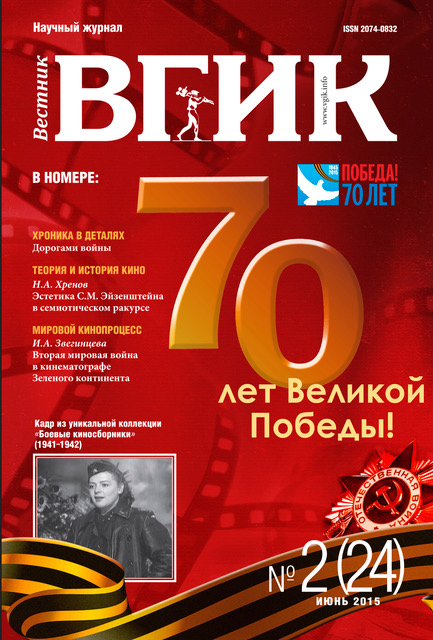Screen Communications As a Form of Socialization and Individualization
- Authors: Urazova S.L.1
-
Affiliations:
- “Vestnik VGIK” Journal
- Issue: Vol 7, No 2 (2015)
- Pages: 142-149
- Section: TELEVISION | DIGITAL ENVIRONMENT
- URL: https://journals.eco-vector.com/2074-0832/article/view/14817
- DOI: https://doi.org/10.17816/VGIK72142-149
- ID: 14817
Cite item
Full Text
Abstract
Common exposure to various kinds of mobile and stationary devices based on screen technologies produce substantiation for the term «screen communications». The relevancy of it’s usage is specified, also the principles of functioning in context of updating social practices and multimedia informational space are substantiated in the article. The issue is due to the fact that the term «screen communications» has not yet been put into academic usage, unlike such terms as «communication», «mass communication» and «social communication». Nevertheless contemporary social practices for using the screen (cell phone, e-book, tablet, etc.) have turned into a daily routine and even demonstrate screen-phobia. The evolution of the technologies, new media (multimedia, multi-platforms), growth of information flows, form and content diversity of informational products, socialization effect and accumulation of empirical experience urge society to resort to the screen for receiving information (film-, video-, TV-production, Internet sites, social networks, computers, cell phones, tablets, e-books, electronic billboards, videoinformational systems, etc.). The article analyzes characteristics of well-known communication’s forms and types when superimposed to the term «screen communications». The problem raised a need for thorough analysis of screen communications which different strata of society master; moreover, a great significance of studying peculiarities of screen culture in the digital era is emphasized. The article cites information about the emergence of Generation C, formed by social networks (a lecture on Nielsen «Consumer 360 Conference»). The «Connected Collective Consumer» has a distinguished identity and is ready for self-expression (ideas, cultural projects, etc.) within the group. As a conclusion it substantiates the nonlinearity of the social systems development, including social networks which are exposed to both the socialization effect and diversification and disintegration processes, which leads to a communication connection’s collapse.
About the authors
Svetlana Leonidovna Urazova
“Vestnik VGIK” Journal
Author for correspondence.
Email: chief-editor@vestnik-vgik.com
PhD (Philology), associate Professor
References
- Березин В.М., Волкова И.И., Грабельников А.А. Экранная коммуникация в современном информационном обществе: учеб. пособие. - М.: РУДН, 2008. - 347 с.
- Кривошеев М.И. Экран в новом времени // Вестник ВГИК, 2010, № 2. - С. 4-10.
- Мариевская Н.Е. О предпосылках создания теории художественного времени // Вестник ВГИК, 2014, № 1 (19). - С. 49-58.
- Назарчук А.В. Теория коммуникации в современной философии. - М.: Прогресс-Традиция, 2009. - 320 с.
- Уразова С.Л. О площадной экранной культуре и принципах формообразования ее продукта. Возвращение к истокам // Медиаскоп. Выпуск № 2, 2011 // URL.: http://www. mediascope.ru/node/816 (дата обращения: 10.06.2015).
Supplementary files








